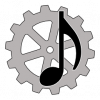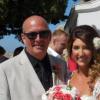
Posted
just tried the demo version, read the some chapters from the manual.
Although I could make impressive experiences, I'm a bit confused of what synfire really can do:
1. How to enter a static/concrete melody (guess it's called "figure" in synfire) , or import it from MIDI ?
I have understood that synfire tries to interpret "melodies" so that they fit into the harmonic context.
But I'm really missing the option to enter an arbitrary melody.
It would useful if you could tell synfire: This figure is static. Don't try to adjust it , only transpose the whole melody, but keeping the semitone distances as entered by the user.
I think it's too restricitve to reduce the possible amount of rendered notes to 7 because the current harmony/chord - let's say I want to enter a C# note below a C Major chord. How is this possible ?
--> "Maybe the user knows better than synfire what notes sounds good with a certain chord"
2. (Related to 1.) How to enter a melody (in the context of C Major) which contains all 12 possible semitones ?
Thanks,
henrik
Mo., 05.01.2015 - 13:13 Permalink
You can always import a track as static. I think it's called "static", "drums and percussion" or similar.
You can also do a static import on all tracks of a midi file. There's a checkmark below allowing you to import everything as static and doing the harmonization/recognition later on.
Don't have my Synfire right here at the moment.
Mo., 05.01.2015 - 13:19 Permalink
You can enter arbitrary pitches using the brown "absolute" symbols. I usually omit those as the special powers of Synfire lie in its ability to transform, adapt and mangle your musical input or import results.
Mo., 05.01.2015 - 14:19 Permalink
It would useful if you could tell synfire: This figure is static. Don't try to adjust it , only transpose the whole melody, but keeping the semitone distances as entered by the user.
To achieve this, In the Parameter Inspector for the Figure, tick 'Bypass VL'. I usually do this for melodies and then use the Harmonizer to help figure out the chords. If you were to use the import or record as static option, it won't transpose but it will when using the Bypass option.
let's say I want to enter a C# note below a C Major chord. How is this possible ?
Again with the 'Bypass VL' ticked, in the Symbol box below it, enter "1" in Chromatic. That should do it!
Mo., 05.01.2015 - 17:09 Permalink
Thanks a lot! I was able to realize my melody.
Mo., 05.01.2015 - 21:31 Permalink
Static melodies use the brown [p] symbols. When you import from MIDI or record your own phrase, be sure to select the "Input for Harmonizer" or "Static …" presets.
I think it's too restricitve to reduce the possible amount of rendered notes to 7 because the current harmony/chord - let's say I want to enter a C# note below a C Major chord. How is this possible?
Find out which chord that is and use it instead of the C Major chord. Or insert a short chord before or after, that accommodates your passing tone. Most often picking a different scale already does the trick.
Songwriting culture oversimplifies harmony in that it writes only one chord per bar, or two. In fact, chords move and change much faster, albeit in subtle steps. Your passing tone C# would sound horrible, if all the other instruments would stick to C Major and not also follow that subtle 'passing harmony' in a consistent way.
Maybe the user knows better than synfire what notes sounds good with a certain chord
Absolutely. Just tell Synfire which chord and/or scale that is and it will help all other instruments to play consistently alongside. Forcing a single instrument only to play a particular note breaks the system and will make it sound horrible when you replace the harmony later on.
How to enter a melody (in the context of C Major) which contains all 12 possible semitones?
Static symbols [p], if that melody is mandatory and not supposed to change (e.g. pre-recorded or composed). Otherwise, use blue vertical symbols, a chromatic chord progression (out-of-key chords) and the longest scales you can select.
If you want to go entirely chromatic, you could as well do MIDI. That's 12 tones and none of the instruments cares about the other. In that case you would not need Synfire.
Here's a video about detecting (chromatic) chords in the light of a global key:
Di., 06.01.2015 - 10:25 Permalink
"Find out which chord that is and use it instead of the C Major chord."
This is no option because I want the other instruments (rhythm guitar, bass) play excatly in this C Major harmony. Only the melody instrument should be free to play (almost) every note.
Di., 06.01.2015 - 19:28 Permalink
If the note is in the vertical scale, it can play it.
Mo., 19.01.2015 - 20:59 Permalink
Again I have a problem with another melody:
Although I have activated "P" for absolute pitch (all notes are colored orange), some notes sound one octave higher then they should, they even sound higher than other notes that appear vertically higher !
Attached screen: the last notes (red line around it) are (musically) rendered higher than all others !
I thought maybe I need to activate "Bypass VL" additionally. But I can't check the option "Bypass VL": it is deactivated, although I have selected some segments (Why?)
Mo., 19.01.2015 - 22:09 Permalink
Hi henrik
I suspect the notes you've circled are outside of the playing range for your instrument. The playing ranges are still adhered to, even for static pitch symbols.
Bypass VL is irrelevant for static pitch, therefore it's greyed out.
Di., 20.01.2015 - 19:33 Permalink
Thanks pete, that solved my problem.
However I'm realizing that entering a melody with absolute/static pitches can be painful in synfire.
If you don't want to record it via midi keyboard, the fastest way is probably to enter it in another Sequencer /notation software, export it as Midi and import it in synfire.
Would be great if there was a kind of "MIDI clipboard" which lets you copy it in e.g. Sibelius and paste it in Synfire.
Di., 20.01.2015 - 22:30 Permalink
There are several methods for recording melodies in Synfire. This is how I usually start most of my ideas. I get an idea for a melody and hum it into my iPhone, then I try to play it on my keyboard. Sometimes (but not always) I try to play chords for it on my guitar to get an idea of the harmony.
For recording in Synfire, I sometimes set the recognition to 'Input For Harmonization' and then use Harmonizer to figure out the chords. This gives the result as Static Pitch, and if I've managed to figure out the chords on the guitar, it gives me a good basis. Often I'm surprised and delighted with the suggestions from Synfire though! For example, I would never have thought of playing that A# chord in C Major on my guitar but Synfire suggested it and it sounds great!
I don't really like leaving static pitches in the composition though, so I'll change them and see what the results are. Sometimes they're better, sometimes not. If they're not better I will either change the symbol types (to either vertical or arpeggio usually) and move them around a bit. If I still don't like it I will keep trying different chords. Often, a chord can be different for just one note, and there's nothing wrong with that in Synfire.
Another method is, rather than recording static pitches, I sometimes just bypass the VL during record. Again I will use the Harmonizer to figure out the chords.
Either method works quite well for me most of the time. You just have to experiment and find out what works best for you. I'm sure there are other ways too, and I'm not saying what I do is right, just what's right for me.
Regarding copying MIDI into Synfire, you can also use Import Phrase on an instrument. I can't remember it exactly right now as I'm not at my Music PC but it's something like that.
Also it's been mentioned on here for a long time now how good it would be to be able to drag MIDI to the Take parameter. It's been noted as a 'good idea' but it's not happened yet. I guess Synfire has such complex code that it's difficult to implement new features very quickly.
Mi., 21.01.2015 - 18:28 Permalink
thanks again for sharing your experiences and workflows.
I don't really like leaving static pitches in the composition
This leads me again to the question whether synfire is meant to be the tool for the final composition (or just for prototyping?) , because normally as composer you'll have a very concrete idea of the melody (at least from a certain point of time in the process of composition), may it be inspired by the powerful features of synfire or from whatever. But normally you'll want the melody to be fixed and don't want it to be changed only because you changed one chord at the end of the song, which may cause the whole tonality/key of the song to be changed and therefore synfire to reinterpret the figure a bit other than before and therefore the final pitches of a passage at the beginning of the song may change, although this passage was not directly affected by the chord change. (Fixed) Melody is the most important, except you are producing techno/drum'n bass or the like. Then melody is replaceable. And of course, if you just need high quality accompaniment, as the singer of a pop song provides the melody.
Mi., 21.01.2015 - 19:47 Permalink
(Fixed) Melody is the most important, except you are producing techno/drum'n bass or the like.
Depends on the project. In orchestral music, there can be so many melodies and ornaments, you simply can't keep track of them all (except for one lead melody) and often you also don't care, because you're kind of 'painting' sound colors with a big brush. That's where dynamic figures yield the biggest benefit.
You always have the option to freeze a dynamic phrase (Phrase >> Freeze) if you want to keep it unchanged. If you're composing for an already existing vocal track, melody is static by definition.
Mi., 21.01.2015 - 20:12 Permalink
Did you tried to record a melody as a "take" with for the figure recognition : input for harmonize (static) ?
Then you have chords and if the static melody chances if you convert the static symbols into the melody symbols, then probably the melody symbols will chance.(pitch) and the melody chances. ( not what you want )
Or you start with a chord progression and record the melody dynamic ..probably the melody chances too
Conclusion : a unaltered melody is only possible as static symbol ..seems to me
In the dynamic mode ..the phrase editor does not reflect the real notes ...the phrase editor is not suited for recording music from a score



